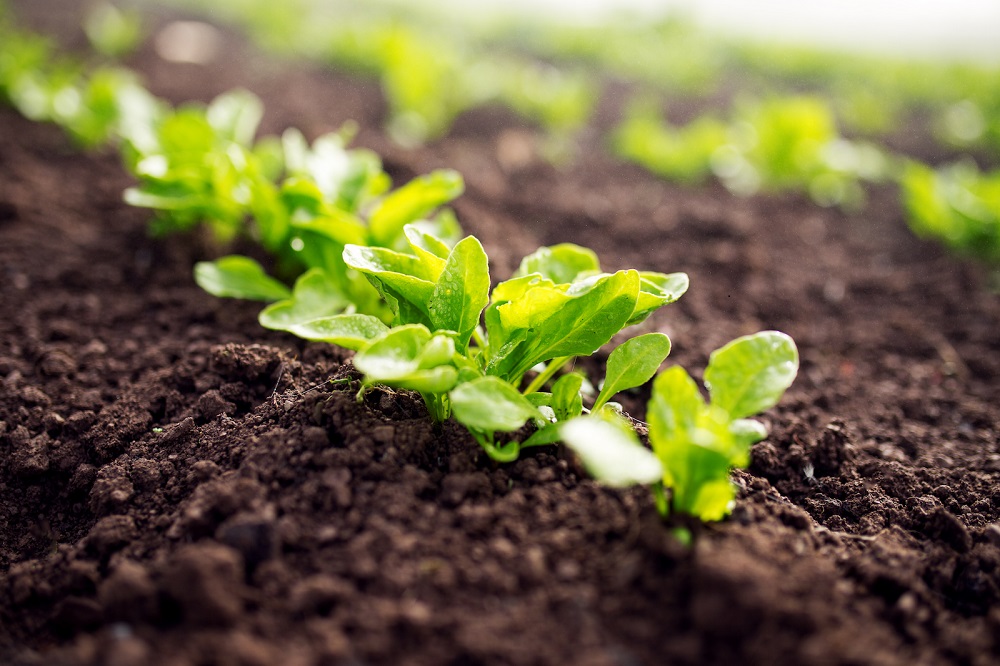
Lettuce is one of the salad crops that grow continuously across the world. Lettuce has existed for centuries and originated in the Asia continent. Due to their diet and medicinal values, the demand for salad crops is increasing daily. The demand for salad crops is increasing daily due to their dietary and medicinal values. However, it is yet to get important in commercial crop cultivation in India. Leafy lettuce vegetables can be eaten raw. Among all the varieties of lettuce, the romaine lettuce variety is famous for its nutritional value.
You can mainly use it as a leafy vegetable in addition to things like sandwiches and wraps. China is the top producer of lettuce in the world. The leaves of the lettuce plant are mainly in the green and red colour spectrum. Lettuce produces smooth, arched, spirally arranged leaves. There are other varieties whose colours are opted in golden, yellow or blue leaves. When it comes to size, they have a wide range of sizes and textures, ranging from the dense head to the iceberg type. Lettuce plants can be spaced about 15 to 30 cm apart. You can grow lettuce in greenhouses, playhouses and even hydroponically. However, proper business planning and farm management practices make lettuce cultivation a successful commercial business. Salad cultivation can yield good profits due to high market demand and growing international food chains.
How to Grow Lettuce in India?
When you grow lettuce you should know the essential information. The best suitable soil pH soil and climate temperature, land preparation play a role to let lettuce thrive well. Starting commercial lettuce cultivation is easy and simple, just like growing other crops. Lettuce plants are very hardy and strong, requiring less care and handling. When you start growing any plant, you need to know the essential tractor equipment that would be useful for lucrative lettuce cultivation. You should find the tractor according to your budget; therefore, you can check the Sonalika tractor price online.
1. Soil Requirement
You can cultivate the lettuce in a wide variety of soils. Good fertile (rich in organic matter) friable loam soils having high water holding capacity and good drainage are ideal for lettuce production. The lettuce crop is very sensitive to acidic nature, so eschew growing lettuce in highly acidic soils. The best suitable soil pH for lettuce cultivation ranges from 5.5 – 6.5. Uniformly distributed moisture will result in leaf quality. Commercial growers should go for soil tests before starting the crop. You should fill the micro-nutrient gap based on test results. Well-rotted organic manure like cow dung or any garden compost works well for plant istanbul escort growth.
2. Seed Rate
Lettuce seeds are delicate and thin and require around 325 grams for one-hectare Lettuce cultivation. Since the seed is ideal, plant the seedlings on the bed.
3. Land Preparation
You should prepare the land to get into a friable and fine tilth stage. You can do this by giving 3 to 4 deep ploughing with a tractor. If you grow the crop on a large scale, recommend soil testing to discern nutrient deficiencies in the soil. According to the soil test result, farmers should supplement the micro-nutrients along with organic matter. For proper water drainage, make sure to have beds.
4. Planting, Seed Rate and Spacing
Since leaf varieties are mostly grown, they can be sown directly in the field and raised on nursery beds. Farmers grow the lettuce in nursery beds and plant it in the main field. Regarding sowing distance, lettuce seeds can be sown in rows 15 to 25 cm apart. Generally, 2 to 3 kg of seed (seed rate) is required for one hectare of land. Generally, the germination of lettuce seeds depends on the temperature. The ideal temperature required for lettuce is around 20 °C to 22 °C.
5. Irrigation Requirement
Uniform moisture supply is very significant for proper plant growth. You should irrigate once every 4-5 days. Be sure to remove excess water in case of heavy rain.
6. Manures and Fertilisers
As the lettuce crop responds to manures and fertilisers very well, it is very important to apply these in time. When it comes to manure and fertiliser requirements, 15 to 20 tonnes of well-decomposed farm yard manure(FYM), 90 kg N (for leaf growth, Nitrogen is very important). Other requirements of 60 – 65 kg each of Phosphorus and Potash p/hac should be applied for better yield of lettuce.
7. Pests and Diseases
In any crop, disease and pest control play a major role in achieving quality and high yield. Following are the pests & diseases found in lettuce cultivation.
Pests: Aphids, Cutworms, and American bollworms are common pests found in lettuce cultivation.
Diseases: Downy mildew, Soft rot, and mosaic are common diseases in lettuce cultivation. However, selecting disease-resistant seeds is important to avoid these common diseases.
Control Measures: For controlling above mentioned pests, contact the local horticulture department for solutions.
8. Harvesting
The harvesting of lettuce depends on the variety. You can harvest leaf lettuce varieties when the leaves are immature and tender for fresh consumption. Generally, the first harvesting should be done 40 to 60 days after sowing in the field. In the case of head varieties, the crop is harvested when it attains a good size and solid head. You should take care of the plant not to damage the wrapper leaves while handling. The leafy type will mature in six weeks, cutting off the outer leaves when they mature so the centre leaves can develop. Bibb-type lettuce will be ready to harvest in 6 to 7 weeks, and the entire plant should be pulled.
9. Yield in Lettuce Farming
The yield of any vegetable crop depends on many factors like soil type, variety, climate, irrigation and other agricultural management practices. However, on average, about 11,000 to 12,000 kg of lettuce can be obtained per 1 hectare of land. Generally, leaf-type lettuce gives comparatively higher yields.
Equipment Requirement
When you want to get information about lettuce cultivation, you should also know the equipment that will help to boost the yield. Cultivators, tillers and tractors are crucial factors in lettuce farming. You can buy the Hindustan tractor when you start farming in a small garden.
For further details about lettuce farming in India, stay tuned with us.





